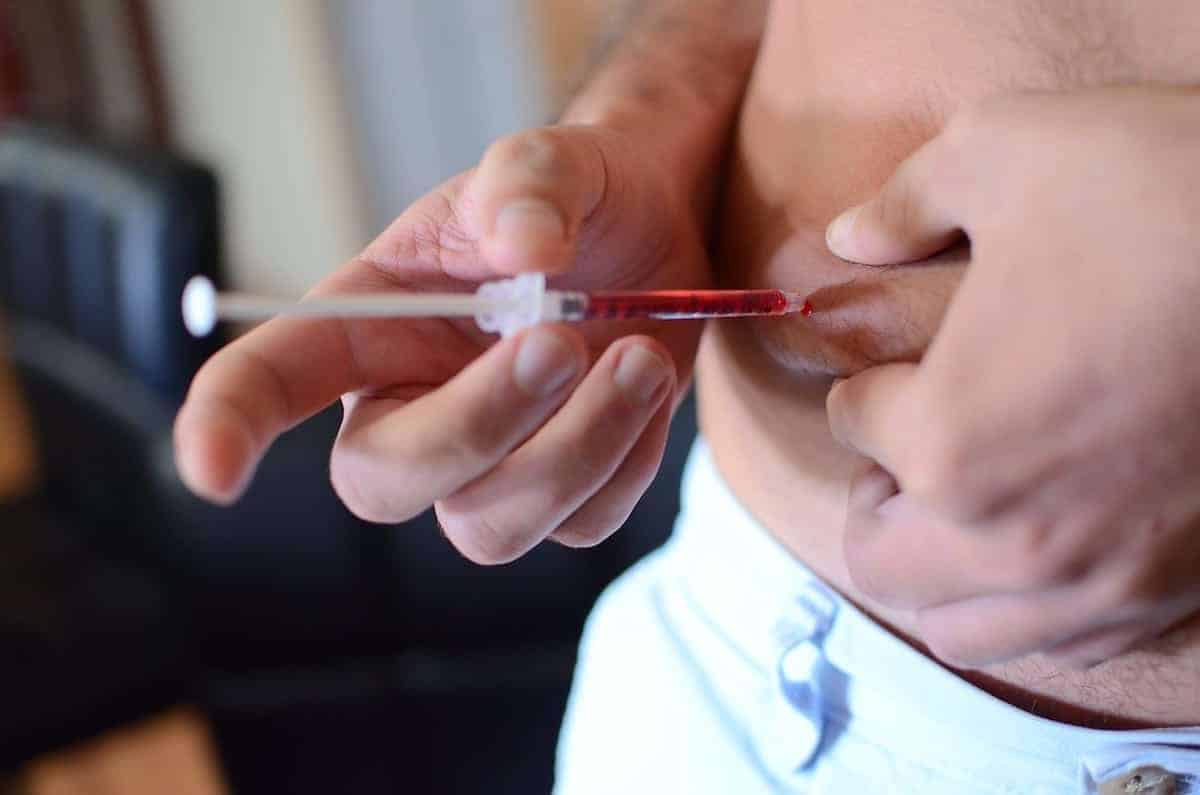When people mention injecting something into fat, they typically mean subcutaneous (SubQ, SQ, or SC) injections. The subcutaneous tissue, or hypodermis, is the layer of fat and connective tissue located beneath the skin and above the muscle layer.
Subcutaneous shots are a common route of administration for drugs like insulin or growth hormone, and vaccines like MMR or chickenpox. The needle goes into the fatty layer below the skin, allowing for slow, sustained absorption of the substance.
Now, what about injecting B12 into fat? Is this a viable delivery method?

What Happens If You Inject B12 Into Fat?
Whether given intramuscular (IM) or subcutaneous (SQ), the goal of the B12 shots is to bypass the digestive system in patients who have difficulty absorbing B12 from the stomach. Both IM and SQ can do the job, and have a long, established history of effective B12 delivery. However, for our injectable B12 we actually prefer subcutaneous over intramuscular, especially when frequent, daily dosing is needed. Here’s why:
B12: Subcutaneous vs. Intramuscular
SQ Is Less Painful
Do B12 injections hurt? For most people, SQ is much less painful than IM, so it’s easier to stick to your B12 injection schedule this way. With frequent shots, rotating among multiple SQ sites is easier and less painful than rotating IM sites.
SQ Carries a Lower Risk of Injuries
Because of the depth of injection and anatomical location, SQ injections carry a lower risk of hitting a large blood vessel, nerve, or bone compared to deeper IM injections. This is why some medications are specifically administered SQ.
For instance, an IM injection in the deltoid (shoulder) could potentially hit the radial nerve or artery if positioned too low. Similarly, IM injections in the gluteal region (buttocks) can damage the sciatic nerve if not correctly placed.
SQ Shots Absorb Slower
Subcutaneous delivery results in slower dispersion of the B12, because fat tissue contains fewer blood vessels than muscle. This results in a more sustained release of the B12, helping to maintain steady levels of the vitamin in the bloodstream.
With B12, the body stores some excess amounts in the liver, while it excretes the rest in the urine. When injecting high doses, the rapid influx of B12 might result in a greater portion being excreted. So the slower release of SQ can be more efficient. However, it’s hard to predict the exact absorption rate. Even with a slow release, there’s still a limit. If the rate of release exceeds the rate of absorption, then excess will still be excreted.
In Summary
When you receive a B12 shot, the body uses what it needs, stores a certain amount, and discards the excess in the urine. Often, B12 shots have a significant excess.
So, what happens if you inject B12 into fat rather than into muscle?
Injecting B12 into fat has three benefits. First, this tissue has fewer blood vessels than muscle, leading to a potentially slower absorption rate for the B12, which may lead to lower amounts of B12 being excreted. Second, there’s a lower chance to hit a nerve, bone, or major blood vessels. Third, injecting into fat is less painful than into muscle.
For all these reasons, we much prefer the SQ delivery over IM.
All the best.